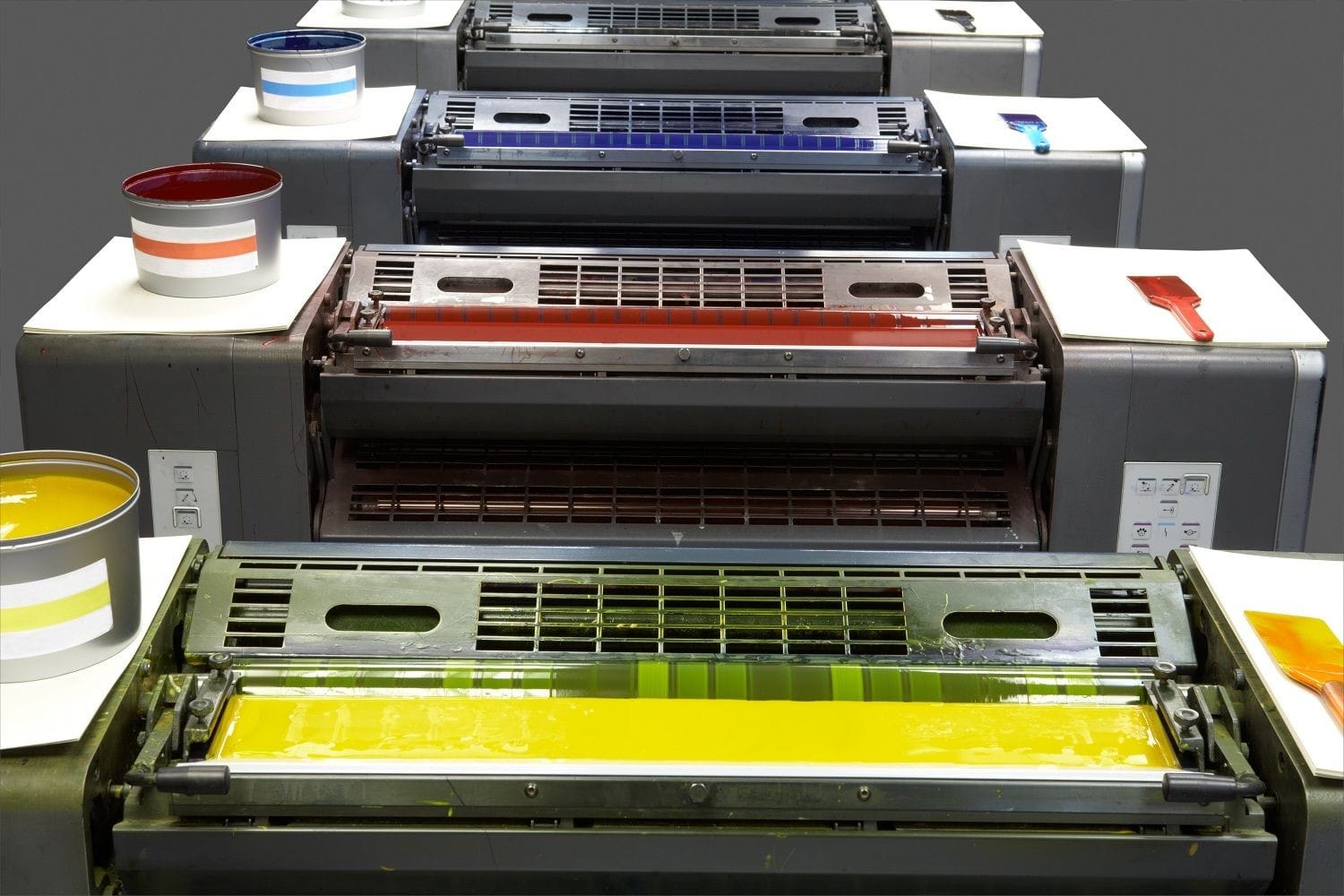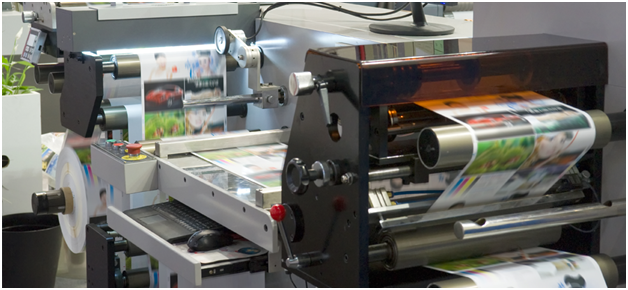The Crucial Guide to Comprehending Litho Printing and Its Applications
Litho printing stands as a considerable approach in the printing industry, rooted in the principles of oil and water repulsion. This strategy not just delivers high-quality photos however additionally provides to numerous commercial requirements. Its applications vary from advertising products to product packaging, showcasing its adaptability. As the industry adapts to brand-new technologies, the advancement of litho printing increases concerns regarding its future and significance in a digital landscape. What exists in advance for this sustaining approach?

What Is Litho Printing?
Litho printing, a widely utilized printing technique, relies upon the principle of oil and water repulsion. This method employs a flat printing surface, typically a metal plate, which is dealt with to assure that the photo locations are receptive to oil-based inks while the non-image areas repel them. The process starts with the production of a photo on home plate, usually via illustration or photographic means. Once the photo is prepared, home plate is moistened with water, complied with by the application of ink. The ink adheres only to the photo locations, enabling accurate reproduction of graphics and message. Litho printing is preferred for its capability to produce top quality prints with fine detail and vibrant shades. It is typically utilized in industrial applications, consisting of papers, publications, and packaging, showcasing its versatility and efficiency in meeting the needs of contemporary printing.
The History of Lithography
Lithography is a modern printing staple, its beginnings trace back to the late 18th century when German dramatist Alois Senefelder created the strategy in 1796. Developed as a technique for reproducing messages and photos, lithography used a level stone surface to develop prints through a chemical procedure. Senefelder's development permitted greater versatility and imaginative expression compared to previous printing methods.By the 19th century, lithography obtained widespread approval, coming to be a popular option amongst artists and publishers. It made it possible for the automation of pictures, maps, and posters, especially impacting the printing market. The strategy further developed with the intro of lithographic presses, boosting efficiency and quality.As the industrial transformation proceeded, lithography adapted to meet the demands of industrial printing, leading the way for modern applications. Today, it stays an important strategy in numerous fields, including publishing, packaging, and art reproduction.
Exactly How Litho Printing Functions
A vital feature of litho printing is its reliance on the principle of oil and water repulsion - litho printing. In this process, pictures are transferred from a level surface, commonly a steel or polymer plate, to paper. Home plate is treated so that the areas intended for printing draw in ink, while the non-image areas repel it due to their affinity for water. The printing begins by dampening the plate with water, which sticks to the non-image areas. Subsequently, an oil-based ink is used, sticking just to the desired picture areas.When the plate enters contact with the substrate, the ink is transferred, creating a print. The litho printing procedure can generating high-quality images with fine detail. It is frequently used for automation as a result of its performance and consistency, making it a preferred technique for industrial printing applications
Benefits of Litho Printing
One noteworthy benefit of litho printing is its capability to produce high-quality photos regularly, making it a perfect selection for industrial projects. This printing method utilizes a flat printing plate, ensuring also ink distribution and sharp information. Litho printing is also renowned for its shade accuracy, allowing vibrant and true-to-life recreations, which is vital for branding materials.Moreover, it supports a wide range of substrates, consisting of paper, cardboard, and even specific plastics, boosting its flexibility. The procedure is affordable for large runs, as economic climates of range decrease per-unit prices. Additionally, litho printing has a quick turn-around time, allowing for effective manufacturing schedules.Its sturdiness additionally implies that published products resist fading, making sure that the last product preserves its aesthetic allure in time. On the whole, these advantages make litho printing a recommended selection across various markets, adding to its long-lasting popularity.
Applications of Litho Printing in Company
As organizations progressively seek dependable and premium printing services, litho printing becomes a vital player in different applications. This technique is particularly preferred for producing advertising materials such as pamphlets, flyers, and directories, many thanks to its capability to supply vivid colors and sharp images. In addition, litho printing is frequently employed for packaging solutions, allowing companies to create captivating tags and boxes that enhance product appeal.In the sector of corporate identification, litho printing is instrumental in producing specialist stationery, calling card, and advertising merchandise, which aid enhance brand acknowledgment. In addition, it is extensively utilized in the publishing industry for published products such as books and magazines, where consistent top quality is paramount. Overall, litho printing's flexibility and performance make it a crucial tool for companies aiming to communicate properly and develop a strong market presence.
Artistic Utilizes of Litho Printing
Litho printing acts as a versatile medium in the domain name of printmaking, offering musicians a distinct approach to reveal their creativity. This strategy enables for a variety of artistic applications, from typical prints to contemporary analyses. By checking out the subtleties of litho printing, artists can harness its distinctive high qualities to boost their work.

Printmaking Techniques Overview
The creativity of printmaking encompasses a diverse array of techniques, with litho printing attracting attention for its unique technique to photo development. This technique relies upon the principle of oil and water repulsion, enabling musicians to attract directly onto a limestone or steel plate with an oily tool. Once prepared, the plate is moistened and inked, moving the picture onto paper via pressure. Litho printing Home Page is commemorated for its capability to generate fine information and rich tonal variations, making it a preferred selection among artists. Furthermore, the procedure is functional, suiting both traditional techniques and contemporary adaptations. This versatility enables litho printing to bridge numerous imaginative designs, improving the printmaking landscape with its distinctive qualities and abilities.
Special Artistic Applications
Discovering the one-of-a-kind artistic applications of litho printing discloses its exceptional versatility in various creative go to this site fields. Artists utilize litho printing to create complex designs and textures, permitting for meaningful and in-depth jobs. The procedure assists in the recreation of vibrant shades, making it optimal for images and great art prints. Several modern musicians welcome lithography for its capability to integrate typical techniques with contemporary principles, leading to innovative art work. Additionally, litho printing is usually used in the manufacturing of minimal edition prints, improving their worth and appeal. The tactile high quality of litho prints adds a distinctive dimension, drawing in enthusiasts and art enthusiasts alike. In general, litho printing stays a substantial tool for imaginative expression, linking classic approaches with contemporary creativity.
The Future of Litho Printing in a Digital Globe
As the printing industry evolves, litho printing deals with the challenge of incorporating digital modern technologies to remain relevant. Approaches concentrated on digital assimilation, along with fads in sustainability and technology, will shape its future - litho printing. Comprehending these characteristics is necessary for market stakeholders seeking to adapt to a swiftly transforming landscape
Digital Combination Strategies
A growing number of litho printing companies are welcoming digital integration approaches to remain affordable in a progressively digital landscape. By integrating electronic workflows, these companies can enhance processes and improve effectiveness. This combination permits for real-time information administration and enhanced interaction between divisions, decreasing turn-around times substantially. In addition, electronic tools enable much better customization and personalization of printed materials, catering to specific consumer needs. Business are additionally adopting hybrid printing options that combine traditional litho techniques with electronic innovations, providing versatility in manufacturing. Additionally, leveraging data analytics assists in comprehending market trends and consumer preferences, permitting companies to make enlightened choices. Generally, electronic assimilation is coming to be vital for litho printing business aiming to innovate and react to evolving market demands.
Sustainability and Development Patterns

Regularly Asked Questions
What Materials Are Frequently Made Use Of in Litho Printing?
The products generally used in litho printing consist of aluminum plates, ink, water, and paper. Each component plays a vital duty in the printing process, making sure top quality image recreation and effective transfer of ink onto the substrate.
How Does Litho Printing Compare to Digital Printing?
Litho printing provides exceptional color consistency and top quality for huge runs, while electronic printing excels in short runs and personalization. Each technique has distinct benefits, catering to different requirements based upon manufacturing scale and cost-efficiency.
What Is the Normal Turnaround Time for Litho Printing Projects?
The normal turnaround time for litho printing jobs varies, usually ranging from a few days to several weeks. Variables influencing this duration include task complexity, amount, and needed finishing procedures, influencing general production routines.
Can Litho Printing Accommodate Personalized Sizes and Formats?
Litho printing can indeed fit personalized dimensions and styles, permitting flexibility in layout. This flexibility enables clients to accomplish one-of-a-kind print results tailored to their specific needs, improving the general effectiveness of their tasks.
What Are the Environmental Influences of Litho Printing?
The environmental effects of litho printing include source intake, chemical use, and waste generation. Nonetheless, advancements in lasting practices and environment-friendly products are slowly minimizing these negative effects, advertising an extra ecologically liable technique to printing.